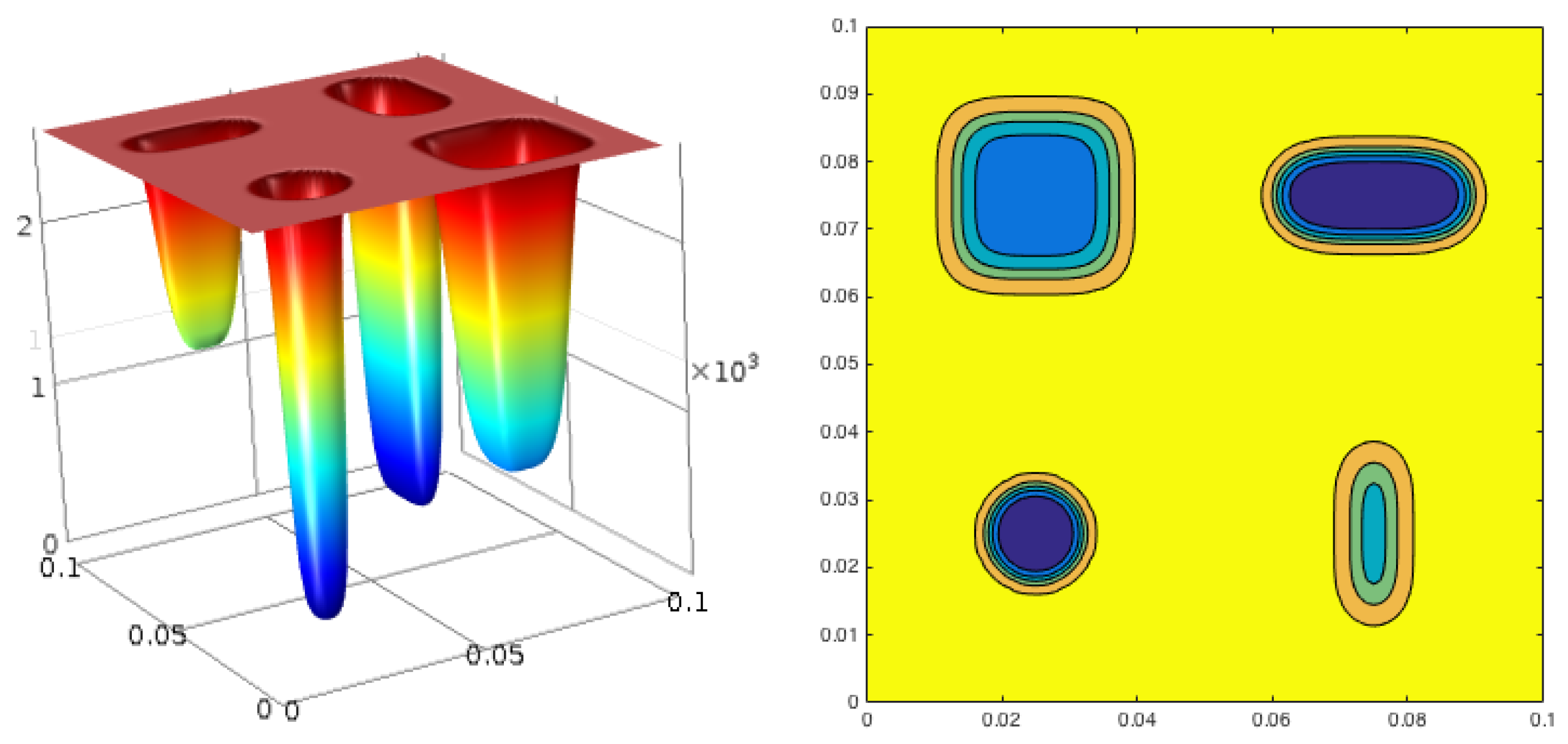Identification of the Thermal Conductance of a Hidden Barrier from Outer Thermal Data †
Abstract
:1. Introduction
2. Geometry of the Specimen
3. Modeling the Heat Conduction through A by Means of Robin Boundary Conditions on the Two Sides of an Interface S. Imperfect Contact
3.1. The Inverse Problem
4. Thin Plate Approximation
5. Numerical Simulations
6. Discussion
Funding
Conflicts of Interest
References
- Javili, A.; Kaessmair, S.; Steinmann, P. General Imperfect Interfaces. Comput. Methods Appl. Mech. Eng. 2014, 275, 76–97. [Google Scholar] [CrossRef]
- Maldague, X.P.V. Theory and Practice of Infrared Technology for Nondestructive Testing; John Wiley and Sons: New York, NY, USA, 2001. [Google Scholar]
- Hashin, Z. Thin interphase/imperfect interface in conduction. J. Appl. Phys. 2001, 89, 2261. [Google Scholar] [CrossRef]
- Colaco, M.J.; Alves, C.J.S. A Backward Reciprocity Function Approach to the Estimation of Spatial and Transient Thermal Contact Conductance in Double-Layered Materials Using Non-Intrusive Measurements. Numer. Heat Transf. Part A Appl. 2015, 68, 117–132. [Google Scholar] [CrossRef]
- Inglese, G.; Olmi, R. Nondestructive evaluation of spatially varying internal heat transfer coefficients in a tube. Int. J. Heat Mass Transf. 2017, 108, 90–96. [Google Scholar] [CrossRef]
- Incropera, F.P.; Dewitt, D.P.; Bergman, T.L.; Lavine, A.S. Principles of Heat and Mass Transfer, 7th ed.; Wiley: Singapore, 2003. [Google Scholar]
- Inglese, G.; Olmi, R.; Scalbi, A. Characterization of a vertical crack using Laser Spot Thermography. Inverse Probl. Sci. Eng. 2020, 28, 1191–1208. [Google Scholar] [CrossRef]


Publisher’s Note: MDPI stays neutral with regard to jurisdictional claims in published maps and institutional affiliations. |
© 2021 by the authors. Licensee MDPI, Basel, Switzerland. This article is an open access article distributed under the terms and conditions of the Creative Commons Attribution (CC BY) license (https://creativecommons.org/licenses/by/4.0/).
Share and Cite
Inglese, G.; Olmi, R.; Scalbi, A. Identification of the Thermal Conductance of a Hidden Barrier from Outer Thermal Data. Eng. Proc. 2021, 8, 16. https://doi.org/10.3390/engproc2021008016
Inglese G, Olmi R, Scalbi A. Identification of the Thermal Conductance of a Hidden Barrier from Outer Thermal Data. Engineering Proceedings. 2021; 8(1):16. https://doi.org/10.3390/engproc2021008016
Chicago/Turabian StyleInglese, Gabriele, Roberto Olmi, and Agnese Scalbi. 2021. "Identification of the Thermal Conductance of a Hidden Barrier from Outer Thermal Data" Engineering Proceedings 8, no. 1: 16. https://doi.org/10.3390/engproc2021008016
APA StyleInglese, G., Olmi, R., & Scalbi, A. (2021). Identification of the Thermal Conductance of a Hidden Barrier from Outer Thermal Data. Engineering Proceedings, 8(1), 16. https://doi.org/10.3390/engproc2021008016





